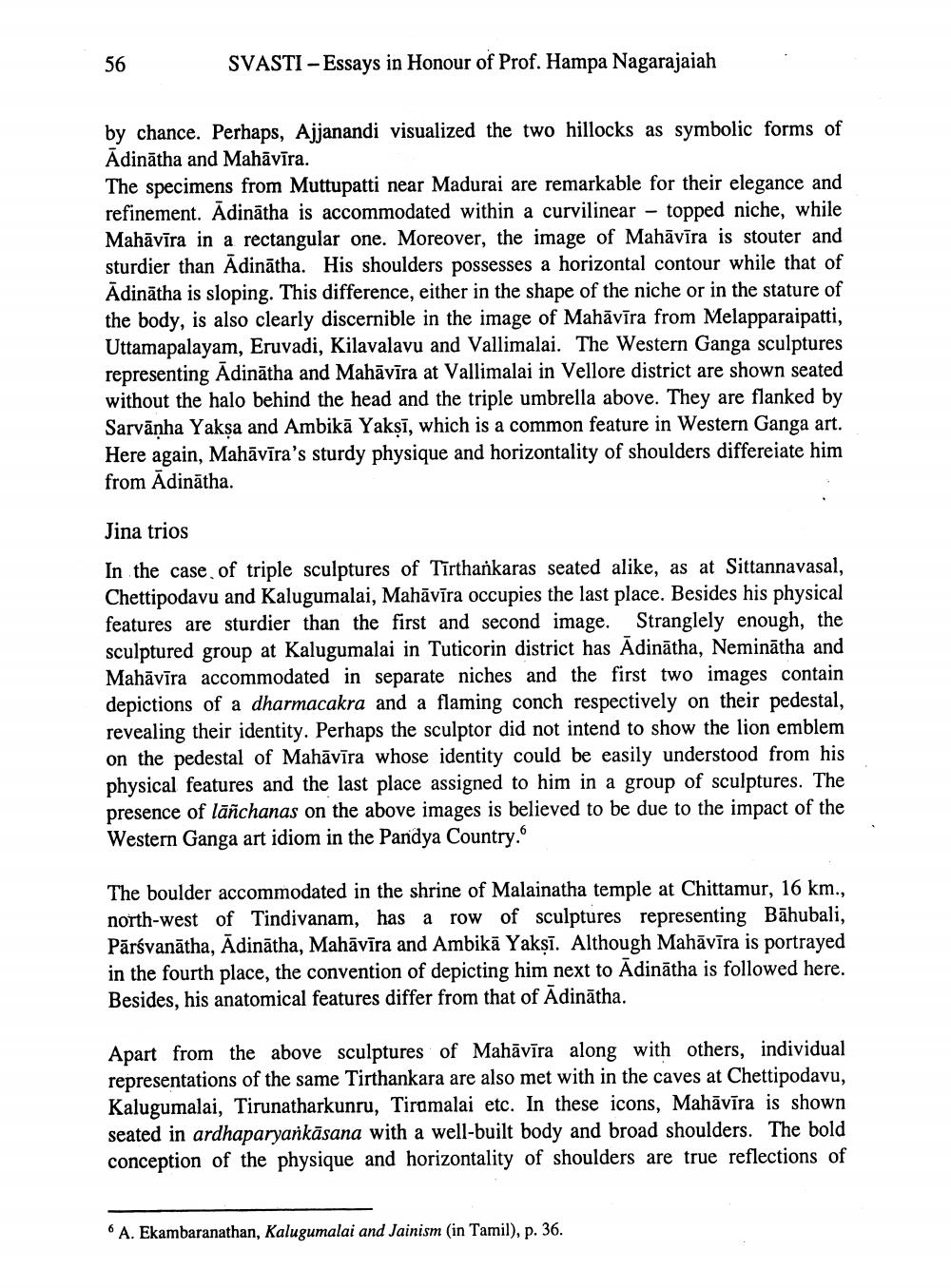________________
SVASTI-Essays in Honour of Prof. Hampa Nagarajaiah
by chance. Perhaps, Ajjanandi visualized the two hillocks as symbolic forms of Ādinātha and Mahāvīra. The specimens from Muttupatti near Madurai are remarkable for their elegance and refinement. Adinātha is accommodated within a curvilinear – topped niche, while Mahāvīra in a rectangular one. Moreover, the image of Mahāvīra is stouter and sturdier than Ādinātha. His shoulders possesses a horizontal contour while that of Adinātha is sloping. This difference, either in the shape of the niche or in the stature of the body, is also clearly discernible in the image of Mahāvīra from Melapparaipatti, Uttamapalayam, Eruvadi, Kilavalavu and Vallimalai. The Western Ganga sculptures representing Adinātha and Mahāvīra at Vallimalai in Vellore district are shown seated without the halo behind the head and the triple umbrella above. They are flanked by Sarvānha Yaksa and Ambikā Yaksī, which is a common feature in Western Ganga art. Here again, Mahāvīra's sturdy physique and horizontality of shoulders differeiate him from Ādinātha.
Jina trios
In the case of triple sculptures of Tīrthankaras seated alike, as at Sittannavasal, Chettipodavu and Kalugumalai, Mahāvīra occupies the last place. Besides his physical features are sturdier than the first and second image. Stranglely enough, the sculptured group at Kalugumalai in Tuticorin district has Ādinātha, Neminātha and Mahāvīra accommodated in separate niches and the first two images contain depictions of a dharmacakra and a flaming conch respectively on their pedestal, revealing their identity. Perhaps the sculptor did not intend to show the lion emblem on the pedestal of Mahāvīra whose identity could be easily understood from his
ysical features and the last place assigned to him in a group of sculptures. The presence of lāñchanas on the above images is believed to be due to the impact of the Western Ganga art idiom in the Pandya Country
The boulder accommodated in the shrine of Malainatha temple at Chittamur, 16 km., north-west of Tindivanam, has a row of sculptures representing Bāhubali, Pārsvanātha, Adinātha, Mahāvīra and Ambikā Yakṣī. Although Mahāvīra is portrayed in the fourth place, the convention of depicting him next to Adinātha is followed here. Besides, his anatomical features differ from that of Ādinātha.
Apart from the above sculptures of Mahāvīra along with others, individual representations of the same Tirthankara are also met with in the caves at Chettipodavu, Kalugumalai, Tirunatharkunru, Tiramalai etc. In these icons, Mahāvīra is shown seated in ardhaparyankāsana with a well-built body and broad shoulders. The bold conception of the physique and horizontality of shoulders are true reflections of
6 A. Ekambaranathan, Kalugumalai and Jainism (in Tamil), p. 36.




